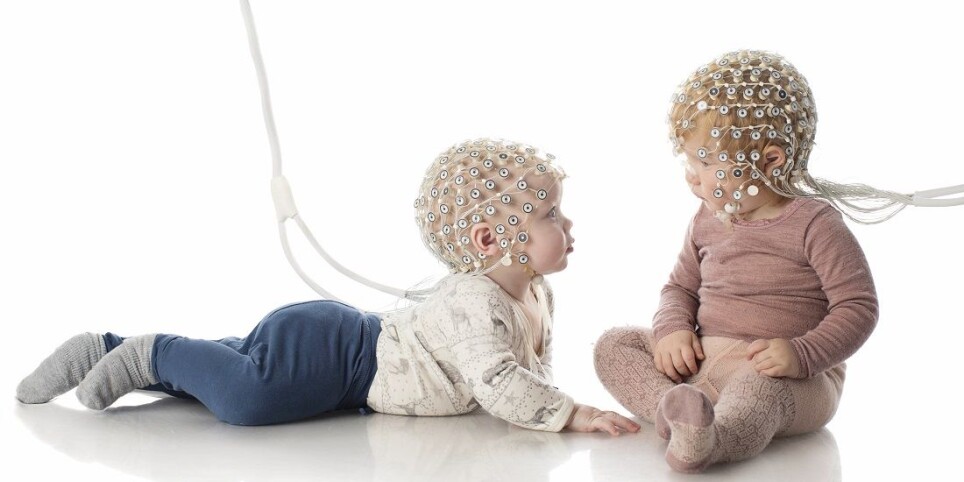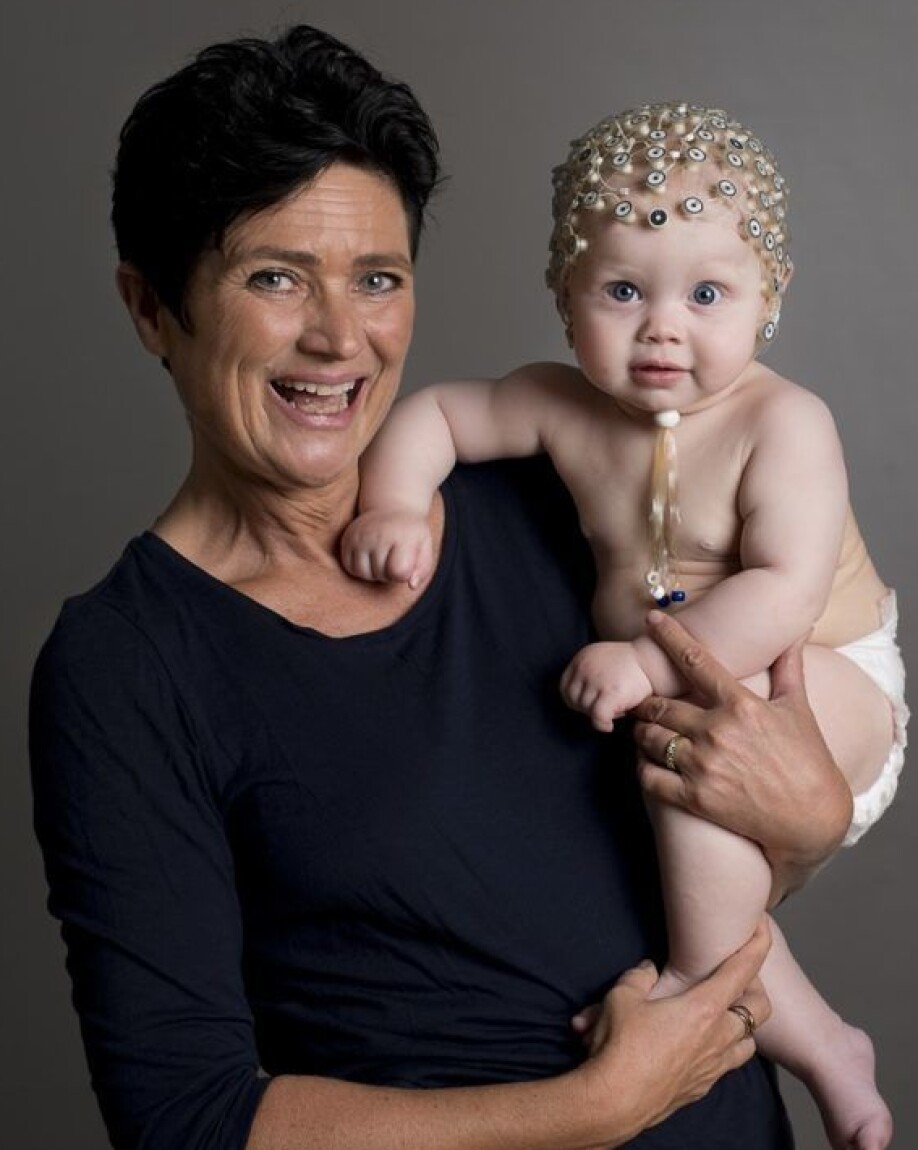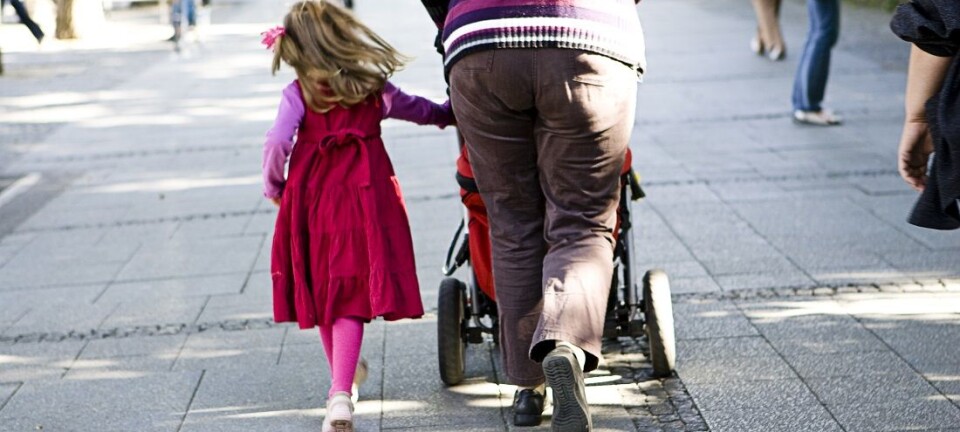This article is produced and financed by NTNU Norwegian University of Science and Technology - read more

Newborns’ clumsy arm movements show how smart they are
For the first time, researchers are measuring the brain processes that control an infant’s first arm movements. The findings may shatter old myths about the immature baby brain.
Human babies are born as rather helpless creatures. Newborns’ sudden and uncontrollable arm movements are often attributed to primitive and instinctive reflexes that are outside the little one’s consciousness and control.
Researchers have believed that an infant’s brain is not mature or developed enough to consciously control its body, and that reflexes are what initially enable the baby to move. As the cerebral cortex matures, the primitive reflexes are gradually suppressed, and the child begins to make controlled movements on its own.
But what if the foetus already has a certain feeling of its arms and how they move while in the mother’s womb? And that the first reflex-like arm movements after birth are actually far more conscious and meaningful for the baby than previously believed?
Brain researchers are now trying to prove this, using infrared cameras and recording babies’ electrical brain activity.
Development continuous from birth
For several years Professor Audrey van der Meer at NTNU’s Department of Psychology has been studying the underlying processes that direct brain development in babies.
She is convinced that we too often underestimate what babies can do and understand. She believes that even newborn babies need to be stimulated and challenged for brain development to take off.
Now she hopes to find the neural correlates to the baby’s first arm movements – that is, the processes in the brain that have to take place for the baby to actually control these movements of its own accord.
“A baby’s first movements may look clumsy, but that’s not because the baby has an immature brain. Rather, it’s due to purely biological factors: that we’re born with a large and heavy head that houses a large human brain, and that after nine months in amniotic fluid we haven’t built up enough muscle strength to handle gravity,” Van der Meer says.
Infants need to make connections
According to Van der Meer, the baby creates a visual stimulus by waving its arms that gradually helps the child understand that her arms are actually attached to her body and can be used as tools to touch and feel her surroundings.
“Children aren’t born with a detailed knowledge of themselves. I think the foetus has an idea of how the arms move. After birth, the baby has to learn to relate the movement of the arms to sight – and eye-hand coordination develops gradually and continuously from the very beginning. Children also have to create a frame of reference for action. They perceive the environment in relation to their body. An arm’s length is something that’s within reach. Something bigger than the hand is too big to grab,” she says.
Might change our view of babies
Now Van der Meer and her colleagues at NTNU’s Department of Psychology will test three-week-old babies using infrared cameras and electroencephalograms (EEG), which neurophysiologically register the brain’s electrical activity.
Researchers have used EEG in studies of the baby brain for many years, but this will be the first time brain data is being is being combined with movement data. This link will enable them to see what is happening inside the brain precisely when the baby moves its arms.
Initially, the researchers will test 25 newborn babies. Brain activity is recorded using an EEG cap with highly sensitive, flat electrodes that the baby wears on its head. Six infrared cameras record movement data from small reflective bracelets that the baby wears on its wrists.
“We hope to show that it’s not the primitive areas of the brain that are active when the infant moves its arms. If we can do that, I think it will make us look at small babies with different eyes,” says Van der Meer.

Babies aren’t colour blind
Knowing that the very youngest newborns use their arms to learn about the world around them and about their own body, it’s important to give them the opportunity to do just that. The baby’s arms and hands shouldn’t be tightly swaddled in a blanket when they’re awake. We should also let infants lie on their stomachs regularly and hold them upright so that they can develop their neck, arm and leg muscles.
Van der Meer points out that we used to think babies were born colour blind, and that there was therefore no point in having toys with colours. Now we know that even the youngest babies are very interested in colours, contrasts and faces. Knowing this, we can support the infant in exploring the world.
“The demands of breastfeeding and sleep deprivation can make the initial adjustment to having a newborn exhausting. If we know that a little baby is a wonderful being who can do so much – who recognizes your voice even before it’s born, who recognizes faces, explores the world and appreciates the colourful visuals over the bed and the toys around it – then I think we’ll treat the baby differently. We’ll regard the small advances and signals from the baby in a different way,” says Van der Meer.
She envisions that researchers will also study babies born prematurely, to learn whether they have less control over their arm movements. This type of knowledge can be used to identify children who need extra follow-up support.
Sound can help blind infants
Van der Meer has also previously studied the arm movements of newborn babies. The researchers attached small speakers to the baby’s wrist, while keeping the baby’s head in a position that left both ears free.
The child’s mother talked or sang continuously into a microphone while watching the baby from a soundproof room through a window. When the sound of the mother’s voice was played at low volume through one of the speakers, the researchers discovered that the baby moved the hand that the sound came from up towards its ear. When the sound stopped and the voice was played through the other speaker, the baby brought that hand towards its ear.
“That experiment provided strong evidence that newborn infants are able to consciously move their arms towards their ears,” Van der Meer said.
She believes that sound can be used to teach blind infants about their own body movements. Babies with normal vision usually begin to grasp objects when they are four to five months old. Blind and sighted infants develop equally until then – but blind babies do not begin to grasp objects.
“It’s as if they don’t understand that they have arms to grab things with. When they can’t learn about themselves through sight, we might be able to help them with sound,” Van der Meer says.
Wants to collaborate with technologists
She hopes that brain researchers can work with technology groups to develop a small instrument that can be attached to the baby’s wrist, and that beeps faster the closer the hands get to the face – just like a backup sensor that beeps faster as a car approaches an object.
In this way, even blind infants can learn about their own body and movements, and about distance, space and the body’s relationship to its surroundings, from an early stage. This will speed up brain development.
“It’s especially important for blind children to be challenged to explore the world on their own. For visually impaired babies, it can be tempting for them to just stay calm, where it’s safe – but we know that crawling and active exploration of the environment within safe boundaries speeds up brain development,” says Van der Meer.
Reference:
Audrey L. H. van der Meer & F. R. Ruud van der Weel: The optical information for self-perception in development. J. B. Wagman & J. C. Blau (Eds.), Perception as Information Detection: Reflections on Gibson’s Ecological Approach to Visual Perception (pp. 110-129). Routledge / Taylor and Francis, 2020. Summary


































